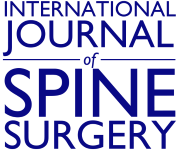Article Figures & Data
Tables
- Table 1
Descriptive statistics of various factors and their correlation with operative duration by bivariate analysis.
Factors Summary Statisticsa Operative Duration, minb, mean ± SD Association with Operative Duration Patient-specific factors Age, y 15.8 ± 3.8 - 0.08 (0.39)c Sex 0.83 (0.10)d M 42 (32%) 243 ± 68 F 88 (68%) 231 ± 66 BMI 21.1 ± 2.3 - 0.08 (0.39)c Cobb angle (of the major structural curve) 64.7° ± 13.6° - 0.38 (0.0001)c Flexibility index (of the major structural curve) (%) 23.9 ± 12.8 - −0.21 (0.02)c C-DAR 8.7 ± 2.1 - 0.13 (0.15)c T-DAR 10.3 ± 4.4 - 0.09 (0.32)c Thoracic kyphosis 32.3° ± 14.6° - 0.12 (0.19)c Lumbar lordosis 49.2° ± 14.8° - 0.10 (0.26)c Axial rotation (Nash and Moe grade) 3.62 (0.01)d 1 14 (9.3%) 228 ± 68 2 68 (45.3%) 219 ± 62 3 43 (28.7%) 261 ± 83 4 25 (16.7%) 263 ± 64 Lenke curve type 0.78 (0.50)d 1 90 (60%) 232 ± 68 2 2 (1.3%) 212 ± 57 3 23 (15.3%) 258 ± 65 4 0 - 5 23 (15.3%) 216 ± 68 6 12 (8%) 248 ± 56 Procedure-specific factors Number of levels fused 11.8 ± 2.1 - 0.29 (0.003)c Number of screws inserted 17.6 ± 3.4 - 0.33 (0.008)c Type of osteotomy used 0.14 (0.18)d 1 118 (78.7%) 235 ± 72 2 25 (16.7%) 229 ± 52 3 5 (3.3%) 254 ± 81 4 2 (1.3%) 264 ± 32 Surgeon-specific factors Experience of the chief surgeon (y) 6.1 (4.9, 7) - −0.36 (0.001)e Experience of the first assistant (mo) 39 (26, 58) - −0.21 (0.08)e Number of assistants 3 (2, 3) - −0.12 (0.11)e ↵a Mean ± SD for continuous variables with normal distribution, median (first quartile, third quartile) for continuous variables with non-normal distribution, frequency/percentage for categorical variables.
↵b Mentioned separately for each group for categorical variables only.
↵c Pearson‘s correlation was used for continuous variables with a normal distribution. Figure in cells denotes the Pearson’s correlation coefficient “r” with P value in brackets.
↵d 1-way analysis of variance used for categorical variables. Figure in cells denotes the ”F” value with P value in brackets.
↵e Spearman’s rank correlation was used for continuous variables with non-normal distribution. Figure in cells denotes the Spearman’s rank correlation coefficient ‘ρ (rho)’ with P value in brackets.
BMI, body mass index; C-DAR, coronal deformity angular ratio; T-DAR, total deformity angular ratio.
- Table 2
Significant predictors of operative duration obtained from multivariate regression analysis.
Parameter Regression Coefficient Standardized Coefficient (β) 95% CI P value Experience of the chief surgeon −22.3 −0.36 −32.39)−(to −12.23 <0.0001 Cobb angle of the major structural curve 1.5 0.35 0.61–2.52 0.001 Number of screws inserted 6.2 0.28 2.21–10.45 0.002 C-DAR 2.2 0.20 0.24–4.62 0.045 Apical vertebral rotation (Nash and Moe Grade)a 2 −32.2 −0.21 −78.2 to 12.4 0.10 3 5.3 0.03 −42.9 to 53.2 0.08 4 6.4 0.03 −46.4 to 60.2 0.08 ↵Final model: n = 150; R 2 = 0.44; P < 0.0001.
a Nash and Moe Grade 1 was taken as a reference.
C-DAR = coronal deformity angular ratio; CI = confidence interval.






